Classics 10 Midterm Art
1/55
There's no tags or description
Looks like no tags are added yet.
Name | Mastery | Learn | Test | Matching | Spaced |
|---|
No study sessions yet.
56 Terms
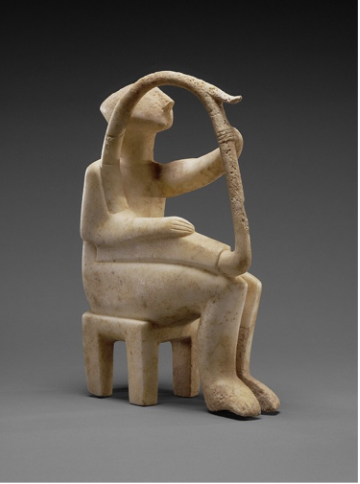
Date: 2700-2300 BCE
Place: Crete (Minoans)
What it is/ why is it significant: Cycladic Harp-Player — represents the artistic style shared by the Cycladic islands around Crete; begs the question was there a Cycladic culture and if so what was it like?
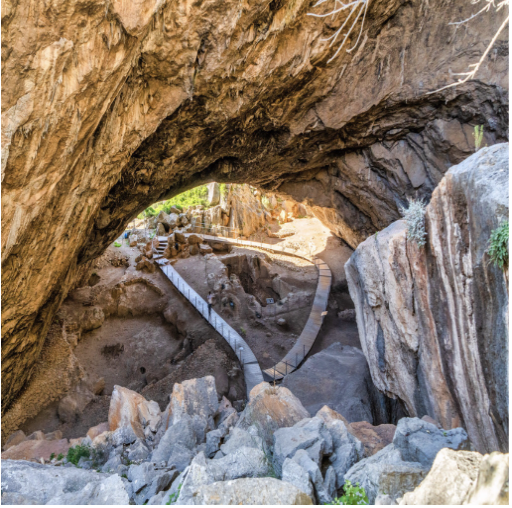
Date: 18000-3200 BCE
Place: Greece
What it is/why significant: The Franchthi Cave — there were hominids in Greece 40,000 years ago surviving the Ice Age, evidence of trade
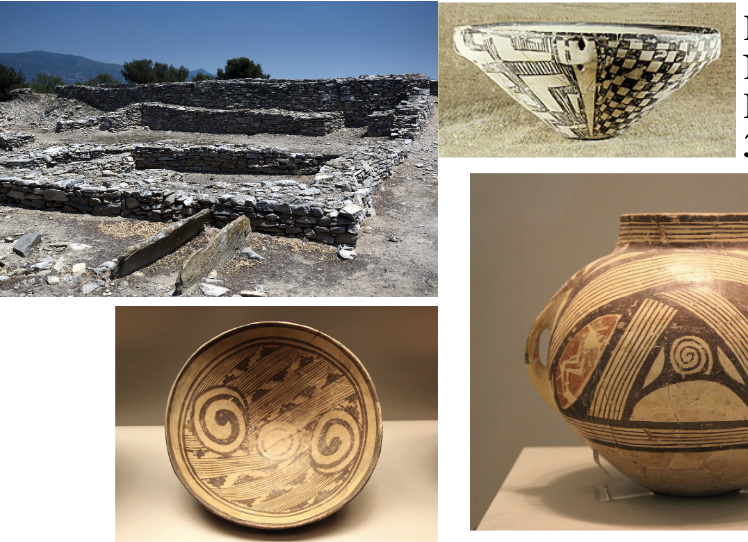
Date: 5300-3300 BCE
Place: Thessaly
What is it/ why significant: Pottery — evidence of trade through different pottery styles, exchange of ideas
house — big house for a chief or leader but speaks to the early organization of people
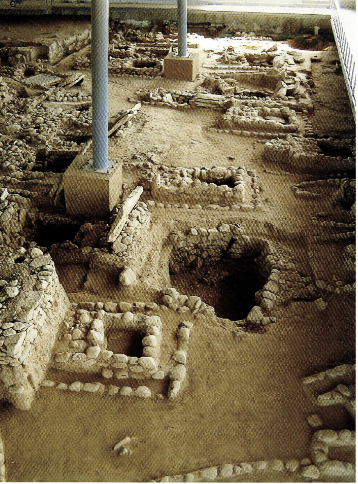
Date: 3000-2000 BCE
Place: Tsepi
What it is/ why significant: Early Helladic Cemetery — reveals community organization through centralized cemetery of burial rites and respecting the dead (community identity); had goods they could spare to bury with the dead
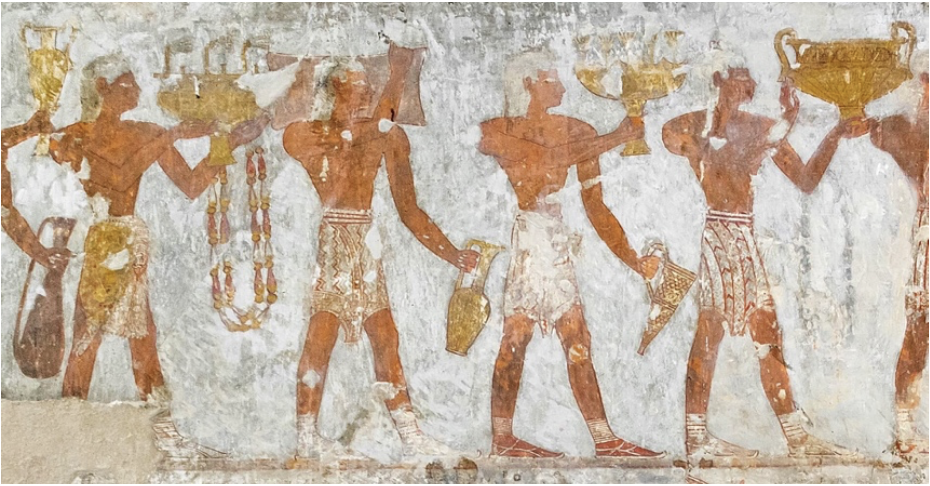
Date: 1400 BCE
Place: Egypt
What it is/ why significant: Rekhmire Tomb Fresco— Fresco that depicts people from around the world giving gifts to the king, Minoans mentioned in corresponding inscription which reveals the interconnection and trade in the Mediterranean at the time
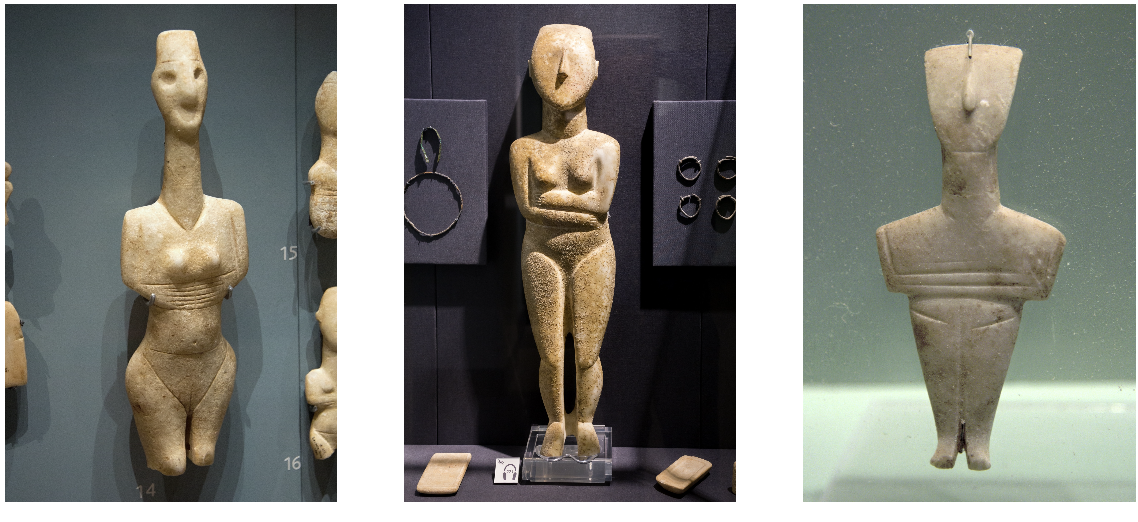
Date: 3200-2200 BCE
Place: Various islands around Crete
What it is/ why significant: Cycladic Figurines — Cycladic culture placed emphasis on female divinities, exchange of culture across islands; tells us about religious practices that predate Zeus and the other gods
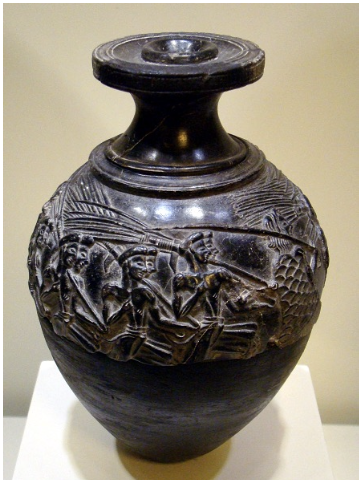
Date: 1500 BCE
Place: Hagia Triada
What it is/ why significant: Harvester Vase — depicts people harvesting grain, might indicate part of the redistributive economy in which farmers bring a portion of their grain to the big house

Date: 1600-1450 BCE
Place: Knossos Palace
What it is/ why significant: King’s Throne — Evans thought this to be a throne of some leading figure reveals the organization of society, artwork behind throne reveals exchange of ideas
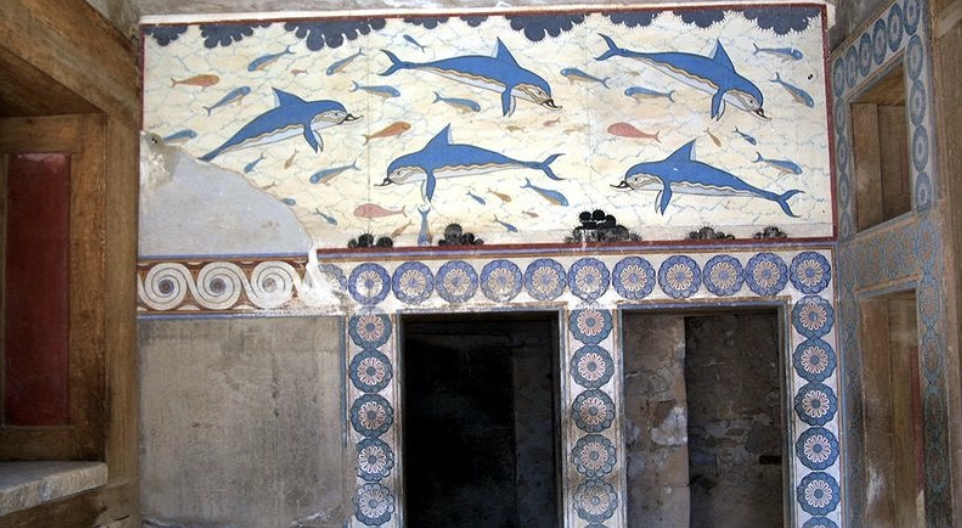
Date: 1600-1450 BCE
Place: Knossos Palace
What it is/ why significant: Fresco of the Dolphins — Reveals scenes of nature which led Evans to think of Minoans as gentle people which contrasts the Mycenaeans
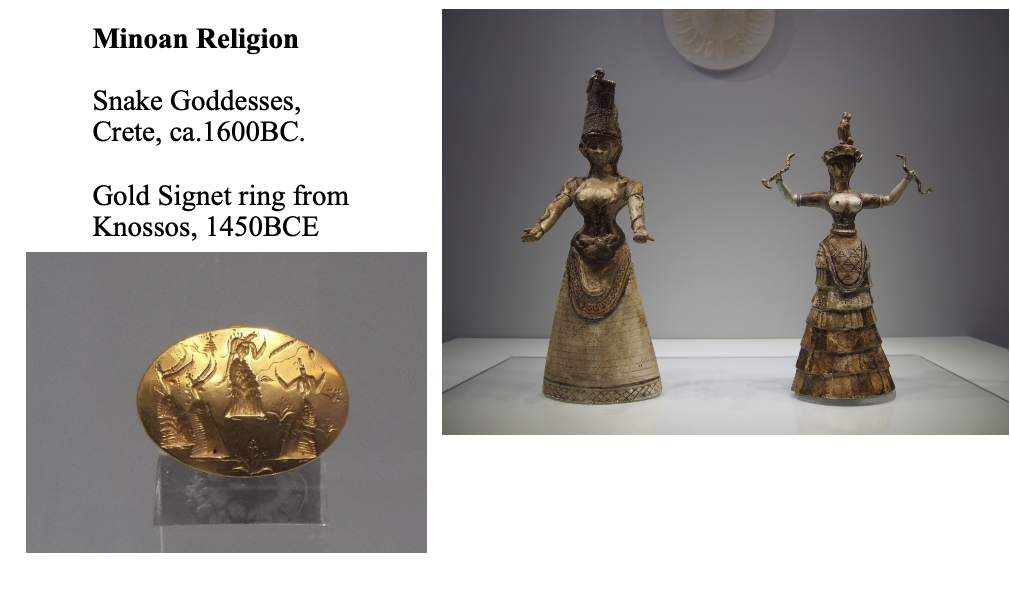
Date: 1600-1450 BCE
Place: Crete (Knossos)
What it is/ why significant: Gold signet ring/Snake goddesses — female worship is central, female sexuality played a large role in rites as female body is linked to fertility and growth; eases anxieties about no crops; role of snakes a deadly power

Date: 1750-1450 BCE
Place: Knossos
What it is/ why significant: Minoan bull leaping depictions (fresco, bronze sculpture, ring) — Clear association with bulls and Knossos, relates to the myth of the Labyrinth, central role of bull in cultic activity

Date: 1500 BCE
Place: Knossos Palace
What it is/ why significant: Grandstand Fresco — Display of public performance with meaning at the central court, again community organization

Date: 1400 BCE
Place: Hagia Triada
What it is/ why significant: Sarcophagus — More ritual evidence of the central bull cult to the Minoans (bull strapped to the table), Egyptian style sarcophagus which again reveals the exchange of ideas
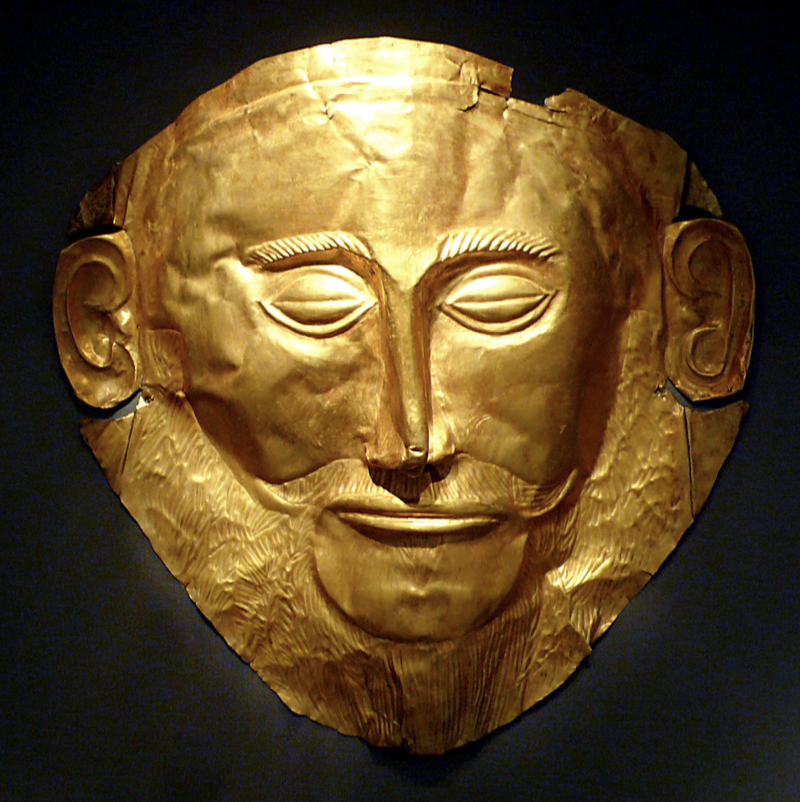
Date: 1500 BCE
Place: Mycenae
What it is/ why significant: Mask of Agamemnon — Probably not actually the face of Agamemnon, but part of this movement to define the Heroic Age of warriors
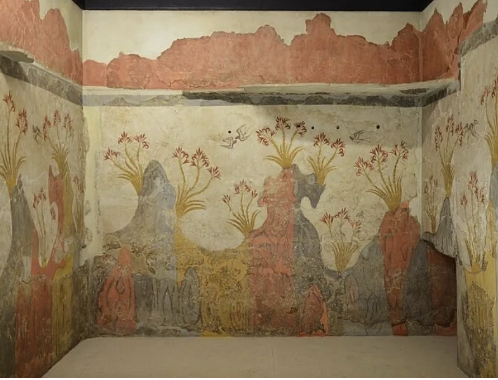
Date: 1650 BCE
Place: Akrotiri
What it is/ why significant: Spring Fresco — Peaceful Minoan frescos that feed into Evan’s view that the Minoans were a gentle and peaceful people

Date: 1650 BCE
Place: Akrotiri
What it is/ why significant: Flotilla Fresco — Peaceful Minoan frescos that feed into Evan’s view that the Minoans were a gentle and peaceful people; ships reveal their trade connections
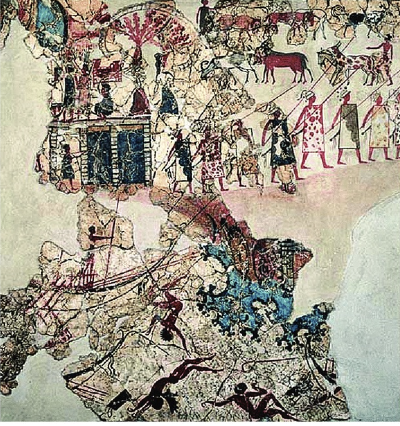
Date: 1650 BCE
Place: Akrotiri
What it is/ why significant: North Wall Frieze — People seem to be falling off ship, cattle raids, not as peaceful a society as Evans assumed it to be.
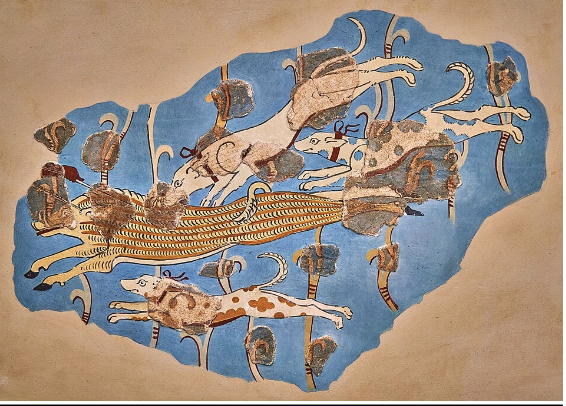
Date: 13th c.
Place: Tiryns (Mycenaean Palace)
What it is/ why significant: Boar Hunt Fresco — Depicts violence of a bull hunt but similar aesthetic and depiction to Minoan bull frescos just a shift towards a more competitive culture; similar images also appear in Egyptian and Sumerian cultures, again exchange of ideas
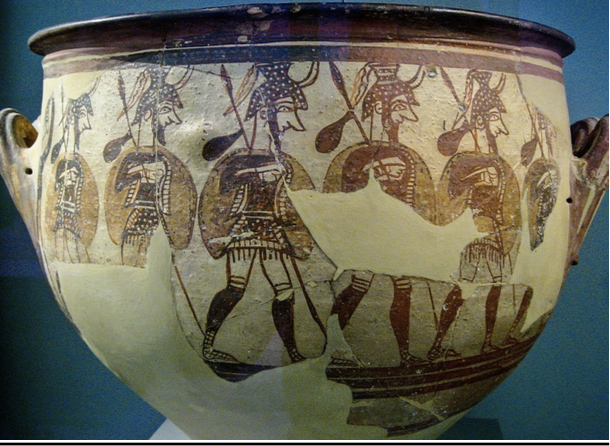
Date: 1200 BCE
Place: Mycenae
What it is/ why significant: Warrior Vase — Mycenae had pots, first depictions of people on pottery, Homer’s description of warriors matches the depictions on these pots - connecting artifacts to myth
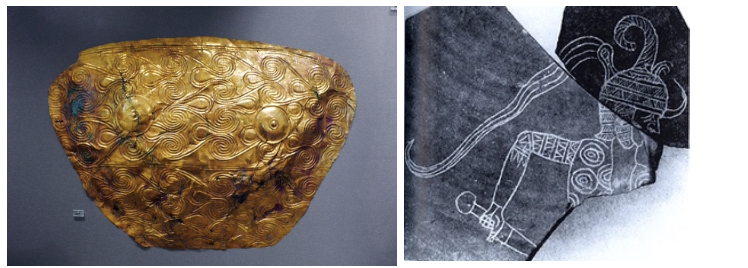
Date: 1500-1350 BCE
Place: Mycenae
What it is/ why significant: Mycenaean armor in Hittite art — Reveals the interconnection of ideas throughout the Mediterranean through similar imagery, also difference in material, gold from the rich Mycenaeans, clay for Hittites
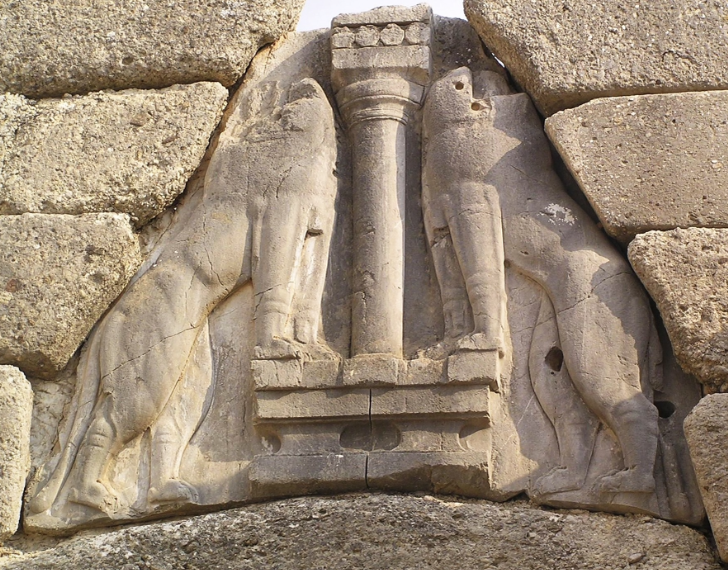
Date: around 1300 BCE
Place: Mycenae
What it is/ why significant: Lion Gate — Something religious, lions symbolize power, clear marker of status and authority, political and military centrality of the site
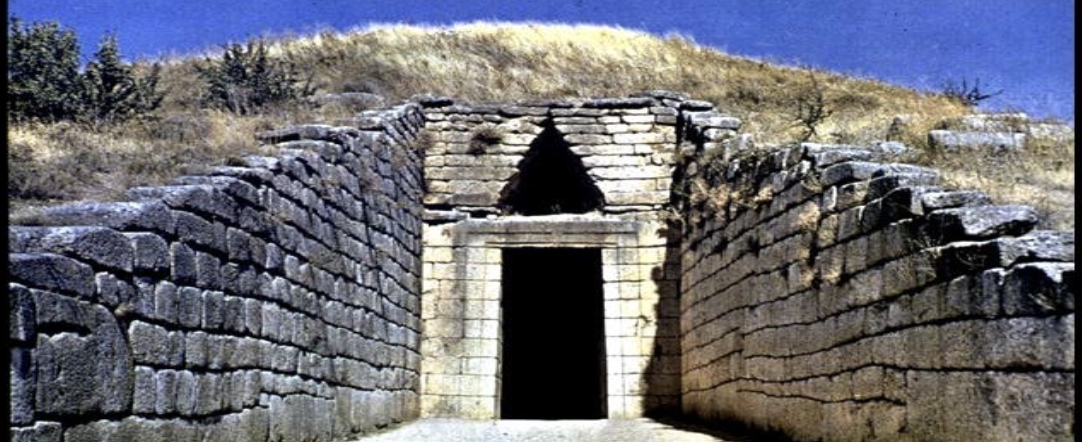
Date: 1300-1250 BCE
Place: Mycenae
What it is/ why significant: Tholos Tomb — Commemorates a wealthy member of Mycenae society reveals the great wealth of Mycenae in a distinctive Mycenae style.

Date: 1500 BCE
Place: Mycenae
What it is/ why significant: Cups from Mycenae — Gold cups reflect the wealth of Mycenae because they could spare the gold to be buried in the shaft tombs.

Date: 1550-1500 BCE
Place: Mycenae
What it is/ why significant: Lion Hunt dagger — Mycenae warrior culture depicted emphasis on hunting the peace time activity of warriors.
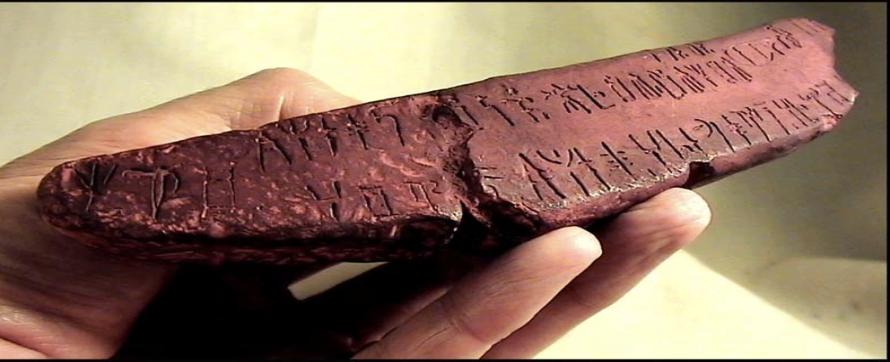
Date: 16th c BCE
Place: Mycenae
What it is/ why significant: Linear B — First translated written language of the Mycenae Greeks and used to record bureaucratic information information but no stories.
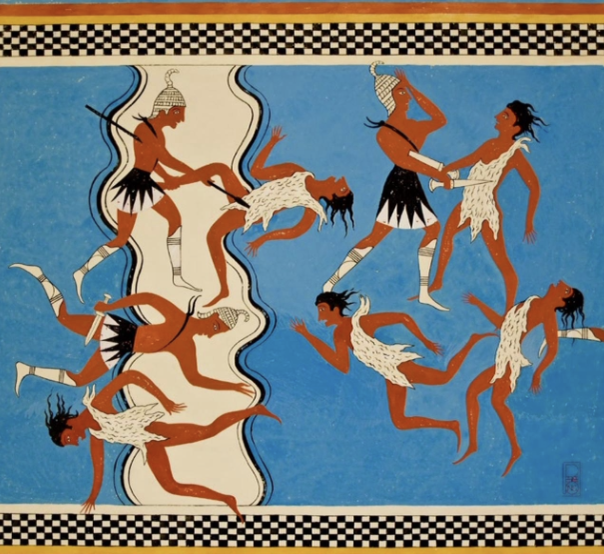
Date: 1250 BCE
Place: Pylos
What it is/ why significant: Warrior Fresco — More signs of battle and warrior culture representative of Mycenae culture.
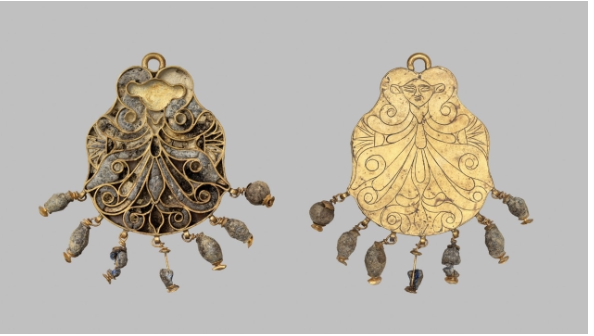
Date: 1400 BCE
Place: Palace of Nestor at Pylos
What it is/ why significant: Pendants off Hathor — Found in Mycenae, but depict an Egyptian goddess with various materials, reveals extensive trade connections
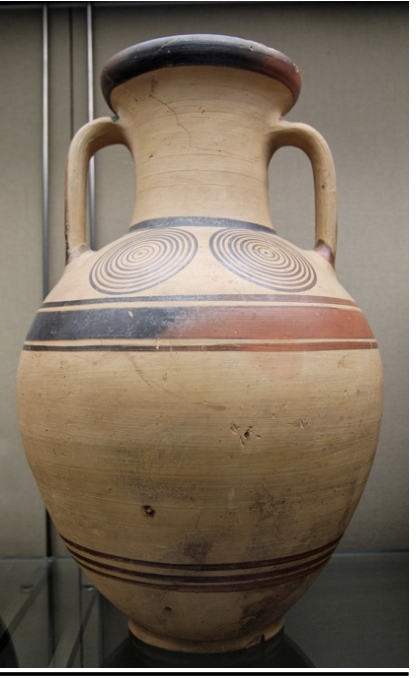
Date: 975-950 BCE
Place: Athens
What it is/ why significant: Protogeometric Amphora (vase) — Represents the reconstruction of culture after the Iron Age (dark age)

Date: 1100 BCE
Place: Egypt
What it is/ why significant: The Sea Peoples — Stone relief at Ramses III temple depicts prisoners as Mycenaean people, there is a record of Greek involvement in battle in Egypt.
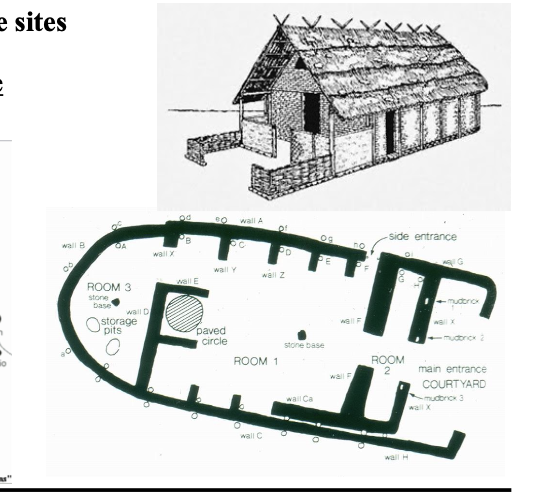
Date: 1050 BCE
Place: Nichoria
What it is/ why significant: Chieftain’s House — Dark ages were not as “dark” as they are described to be. Religious as well as political. House represents going back to social organization with storage rooms for the redistributive economy.
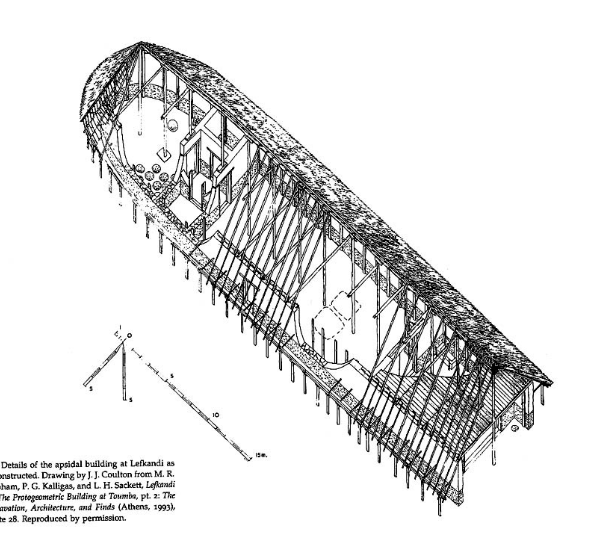
Date: 975 BCE
Place: Lefkandi
What it is/ why significant: Heroon — Home for a chieftain or “big man” who assumes centrality; a continuation of social organization after the Bronze Age. Shaft graves buried beneath the structure, many goods found there as well as ashes.
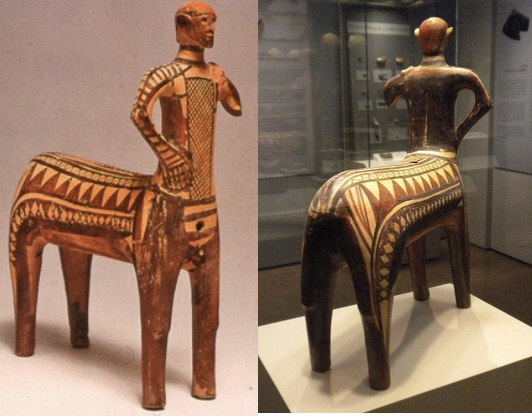
Date: 900 BCE
Place: Italy, Syria, Lefkandi
What it is/ why significant: Centaur sculptures — Similar figures of the Centaur found in Lefkandi tomb parallels similar figures found in Syria and Italy.
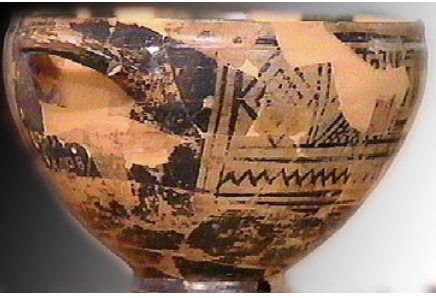
Date: 720 BCE
Place: Pylos (Nestor)
What it is/ why significant: Nestor’s cup — First example of the new Greek alphabet after Linear B is lost.
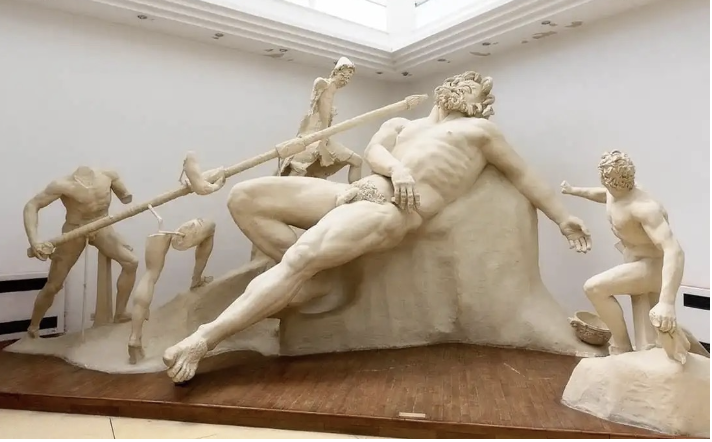
Date: ancient sculpture
Place: country of the cyclopes
What it is/ why significant: The Blinding of the Cyclops — Sculpture depicts when Odysseus took down the Polyphemus; conquering of the other, alien monster who didn’t reciprocate Greek hospitality.

Date: 390 BCE
Place: Paris
What it is/ why significant: Red-Figure Crater (pottery) — Odysseus summoning the shades from the underworld; Odysseus discovers the role of women and heroes; heroic code doesn’t mean anything in death; harks back to the golden age before the Iron Age where life is hard
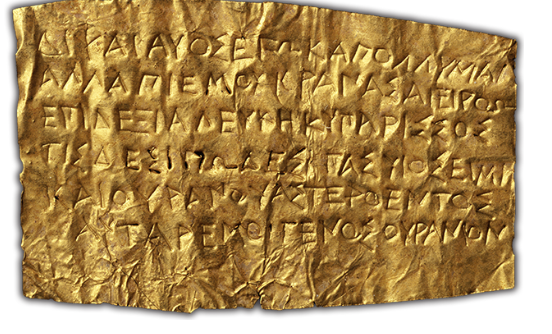
Date: 350-300 BCE
Place: Buried near burial mounds
What it is/ why significant: Tablet with instructions for deceased in the Underworld — Testifies to concern with underworld and where you go; instructs you on what to do when you die

Date: 480 BCE
Place: London
What it is/ why significant: Red-Figure Siren Vase — Depicts the Siren scene from the Odyssey where Odysseus is tied to the mast and his men put wax in their ears; significance of Odyssey on Greek culture and identity, Odysseus as a heroic leader with a need to know
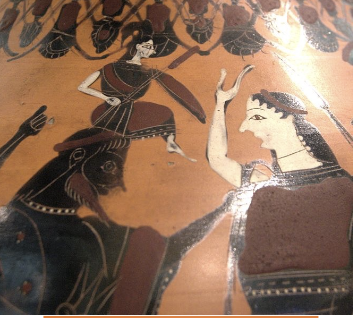
Date: 550 BCE
Place: Paris
What it is/ why significant: Black-figure Amphora (vase) — Athena is born out of Zeus’ head reveals Zeus’ divine power and kingship as he defies gender roles and can reproduce without the role of a woman
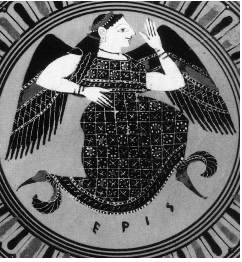
Date: Early 6th c.
Place:
What it is/ why significant: Black-Figure Kylix (cup) — Depicts Strife, two kinds of strife: a good strife that drives men and creates a competitive and entrepreneurial spirit but associated with anger and the strife that creates war.
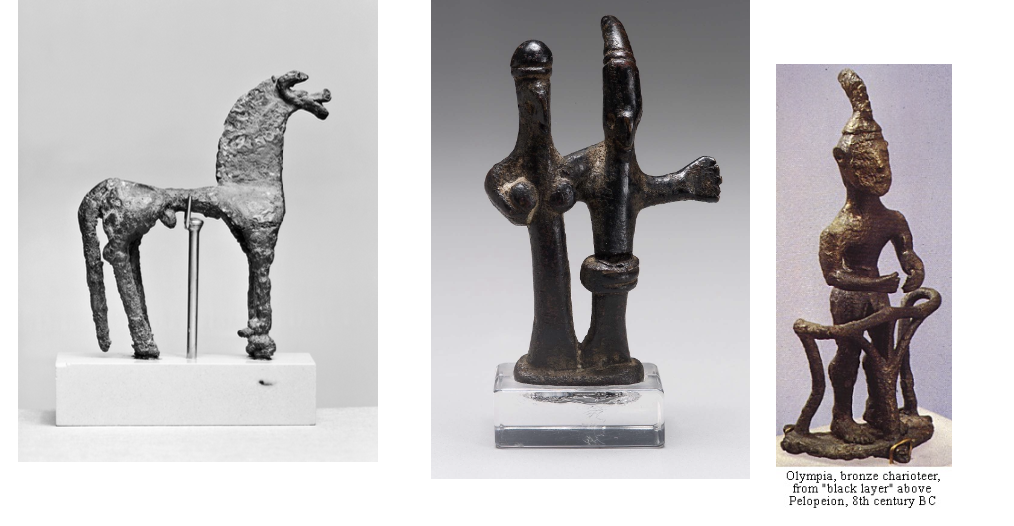
Date: 8th c.
Place: Olympia
What it is/ why significant: Animal Figurines — Found and dedicated at Olympia, reveals the cult and beliefs in Greece before Greeks worshiped Zeus.
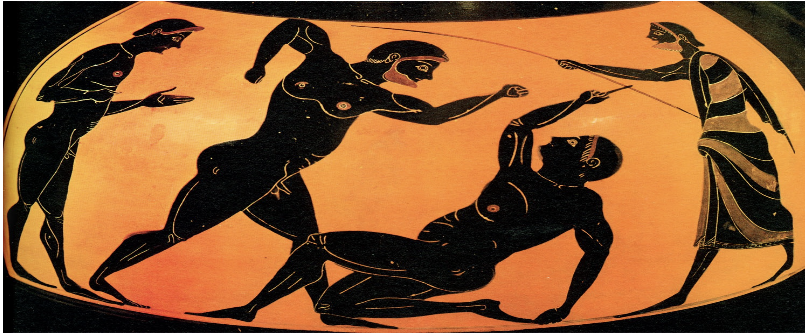
Date: 8th c.
Place:
What it is/ why significant: Black-figure vase — Depicts a scene from the Olympic games that emphasizes the importance of rules and objectivity. Olympics are extreme circumstances in which you can whip a freeman for not obeying.
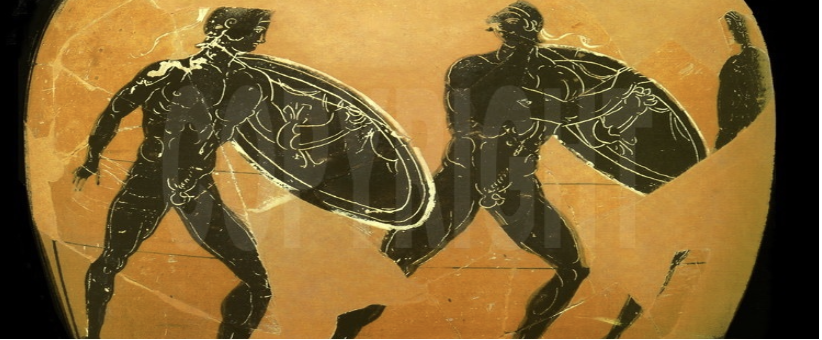
Date:
Place:
What it is/ why significant: Black-Figure vase — Depicts one of the events at the games using shields. Reflects how Greeks values success in athletics and believed it would be helpful during warfare relates back to the Pan-Hellenic identity
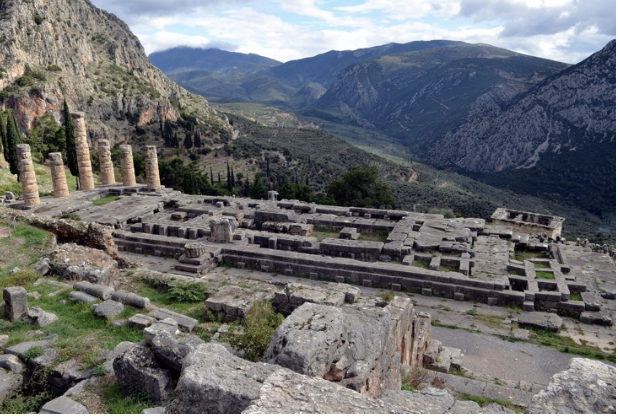
Date: 8th c.
Place: Delphi
What it is/ why significant: Temple of Apollo — Where Apollo built his temple as described in the Homeric Hymn and where the oracle sits that many Greeks traveled to in order to have their omen portended.
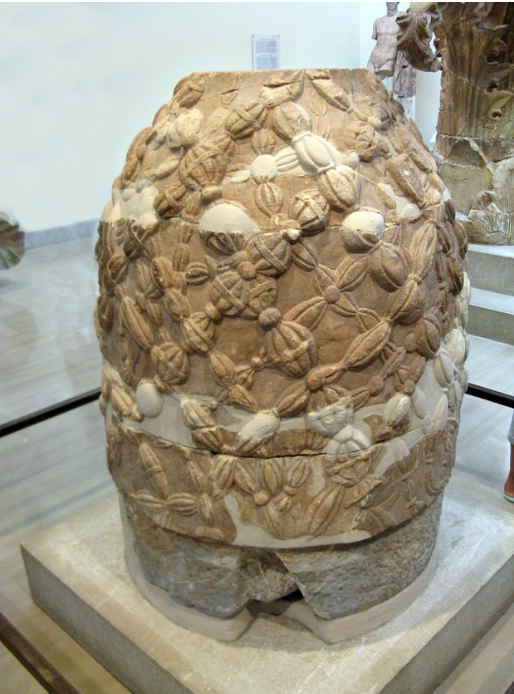
Date: Late 1st c.
Place: Delphi
What it is/ why significant: Omphalos — believed to be the stone given to Kronos instead of Zeus. Zeus placed the rock at Delphi and therefore the site is thought to have a strong connection to the divine.
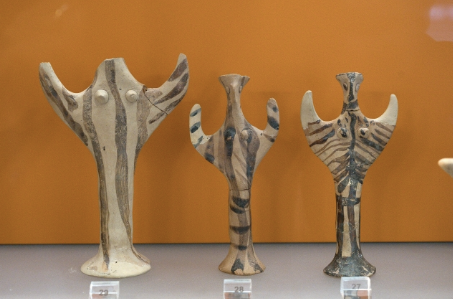
Date: 12 c BCE
Place: Delphi
What it is/ why significant: Mycenaean Terracotta Figurines — Found at the sanctuary of Athena at Delphi, prior to Apollo taking over Delphi Athena was worshipped there transition from feminine to masculine worship
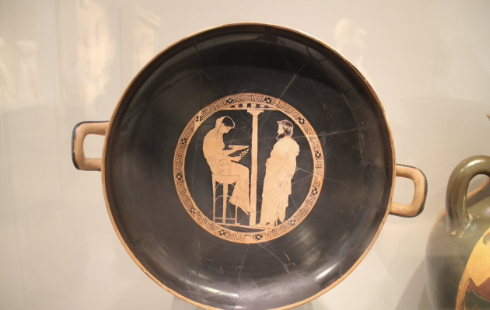
Date: 440 BCE
Place: Delphi
What it is/ why significant: Red-Figure Kylix (cup) — Depicts a king seeking an oracle from Themis at Delphi, another example of female worship and oracle use before Apollo arrives at Delphi
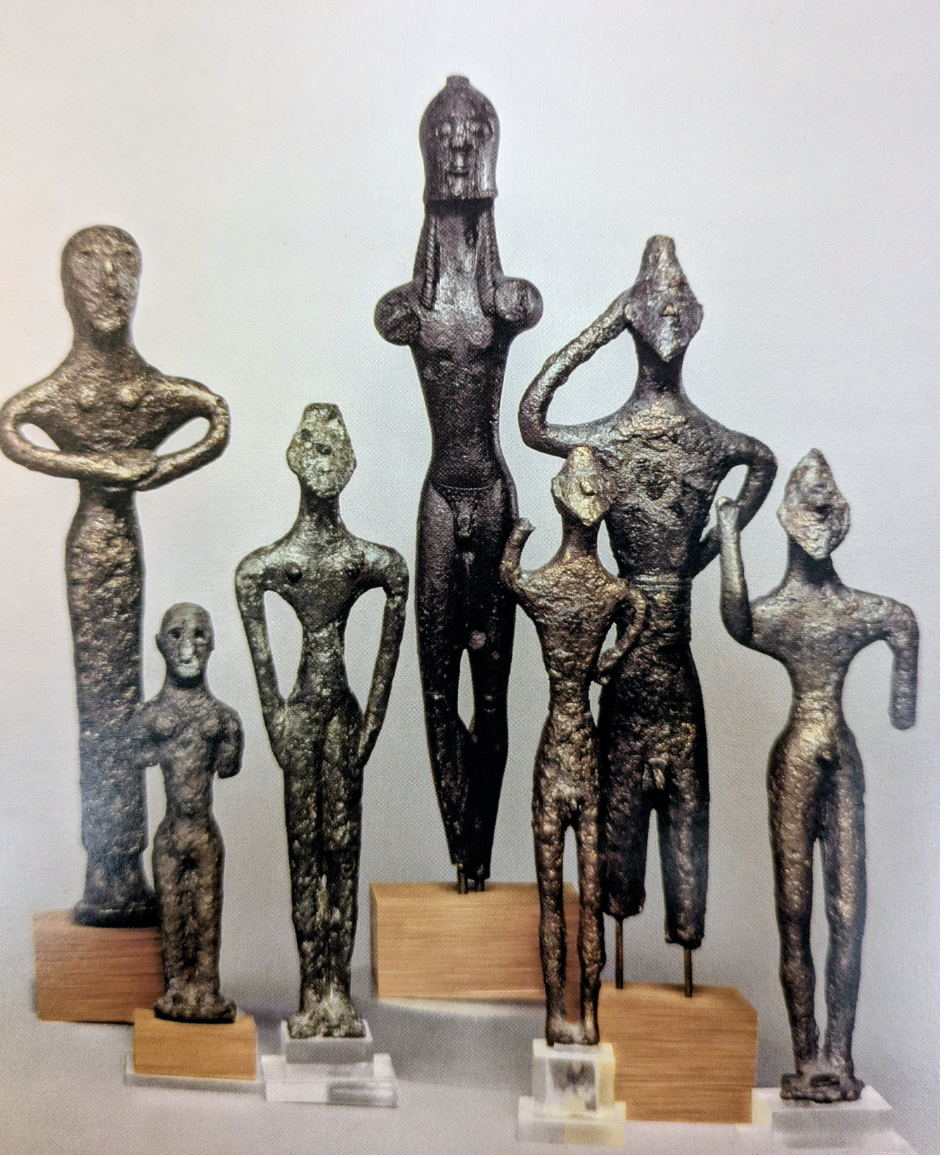
Date: 900 BCE
Place: Temple of Apollo at Delphi
What it is/ why significant: Male figurines — Counterparts to the female figurines of Athena worshiped at Delphi earlier. Movement from deity to deity and in increase in the Apollo cult.
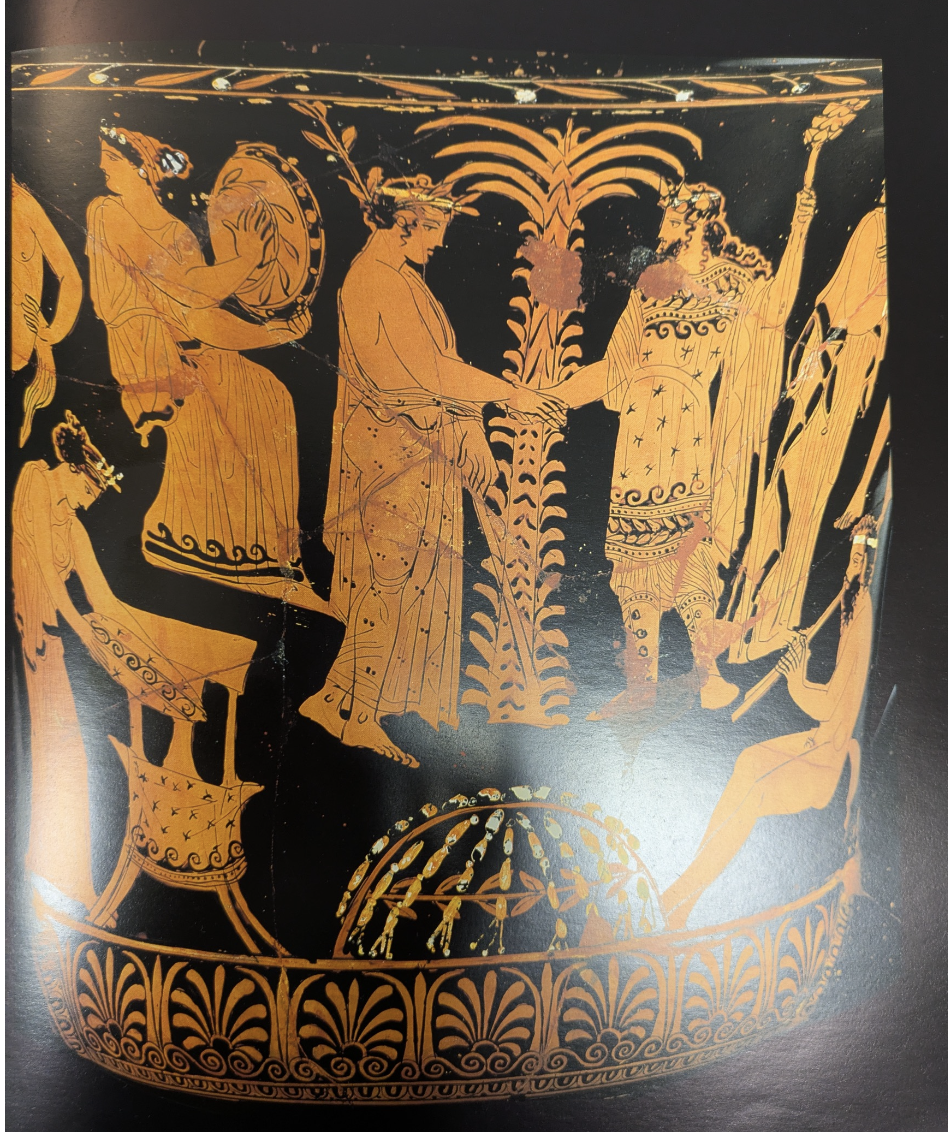
Date: early 4th c.
Place: Delphi
What it is/ why significant: Red-figure crater (vase) — Depicts Apollo welcoming Dionysus to Delphi. Reflects the sharing of Delphi amongst many deities as Apollo was only at Delphi 9 mo out of the year where Dionysus was 3 mo.
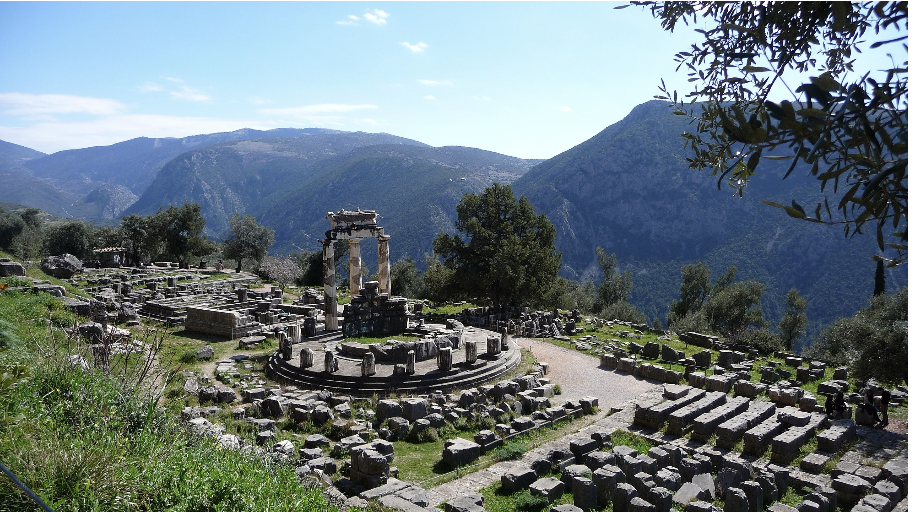
Date: 7th c
Place: Delphi
What it is/ why significant: Sanctuary of Athena — Temple dedicated to Athena where female worship took place.
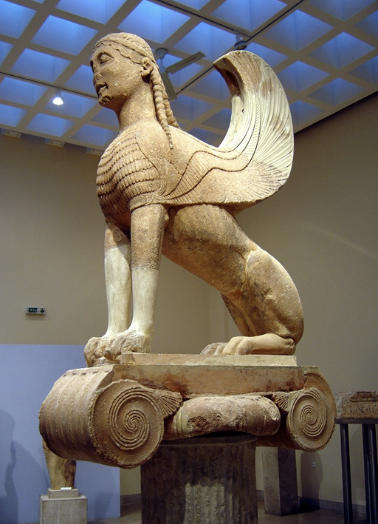
Date: 560 BCE
Place: Delphi (sanctuary)
What it is/ why significant: Sphinx of Naxians — Sat atop a tall column, brought to the oracle at Apollo’s temple as a payment for an omen. Naxians recieved exemption from taxes after giving this gift.

Date: 12th c BCE
Place: Delphi
What it is/ why significant: Athenian Treasury at Delphi — Prominent display of wealth; government propaganda to promote ideas of identity and power to visitors.
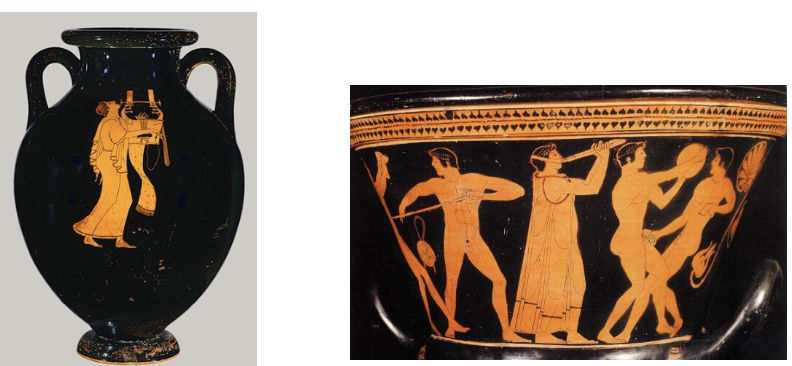
Date: 430 BCE
Place: Delphi
What it is/ why significant: Red-Figure Vase: Depicts scenes from the Pythian Games in honor of Apollo’s patronage. They display scenes of music as the games were artistic in addition to athletic.
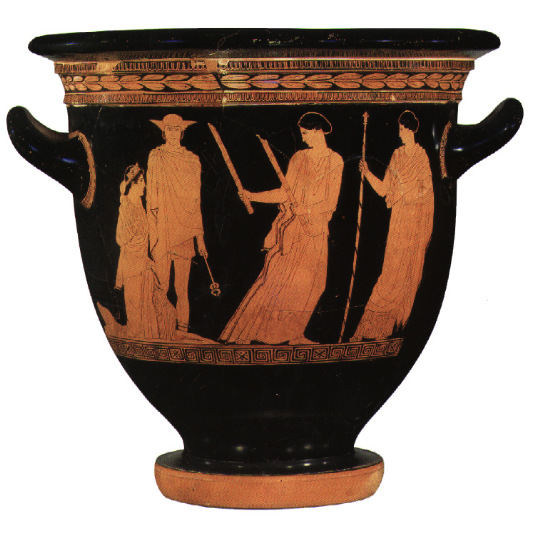
Date: 5th C. BCE
Place: scene takes place in Eleusis
What it is/ why significant: Depicts the scene of Hermes bringing Persephone from the Underworld to be with her mom, Demeter. Story is significant as it relates to female sexuality and the fecundity of the land and the anxieties of mortals that crops won’t grow every year.

Date: 440 BCE
Place: Eleusis
What it is/ why significant: Marble Relief Sculpture — depicts Demeter, Triptolemos and Persephone. Demeter tried to make T immortal and reflects the mortal desire to become immortal and the mystery of Demeter’s rites as they relate to achieving immortality possibly.
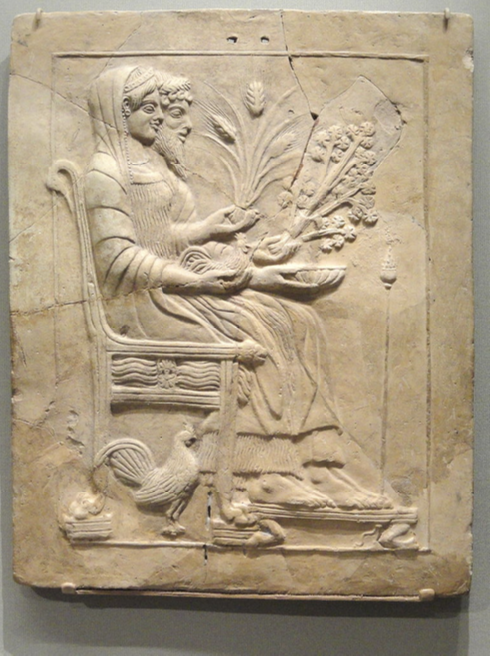
Date: Early 5th C.
Place: Sanctuary of Persephone
What it is/ why significant: Marble Pinax of Persephone and Hades — Depicts them sitting on their thrones with some kind of offerings
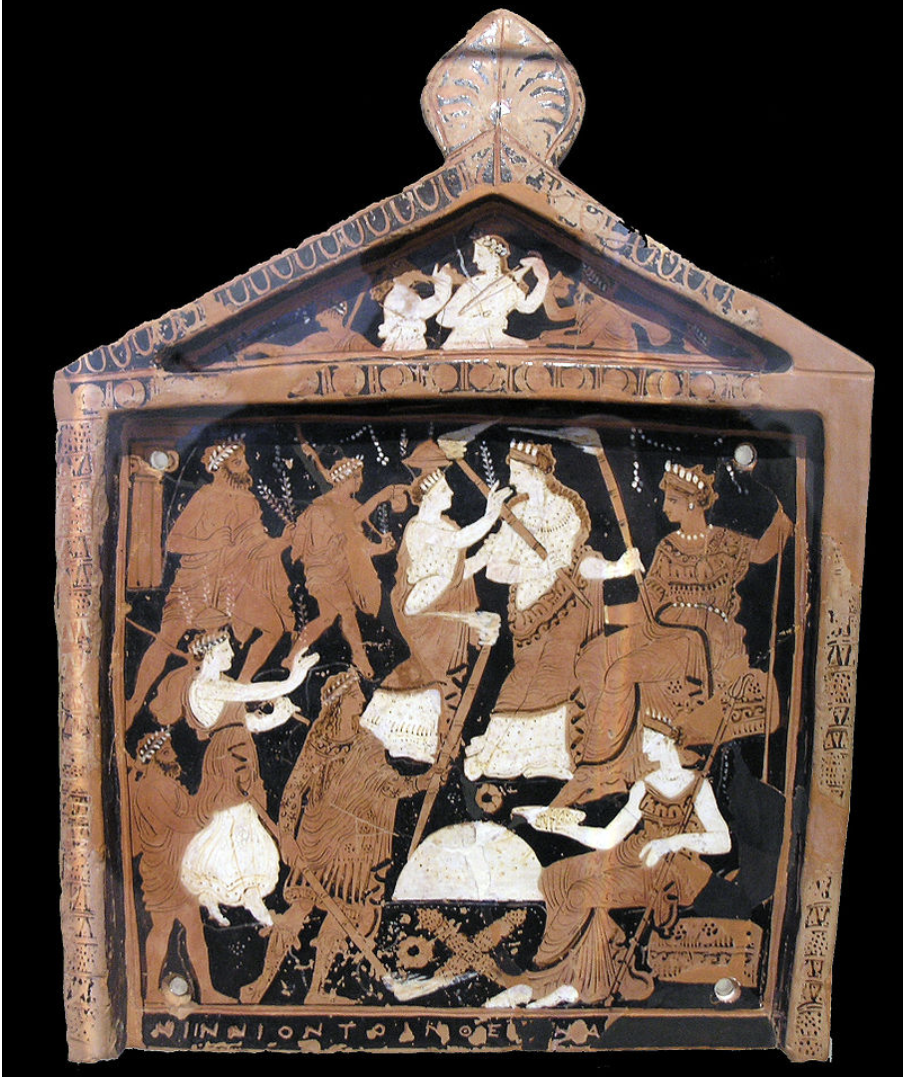
Date: 370 BCE
Place: Eleusis
What it is/ why significant: Ninnion Tablet — Only known artifact from Eleusinian Procession and initiation for Demeter as her rites were secret.